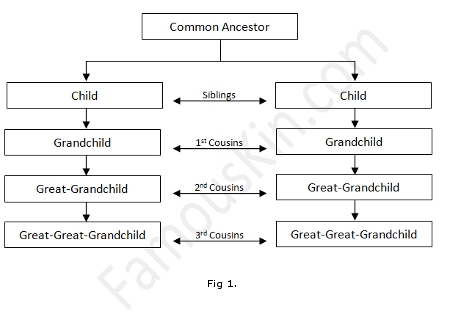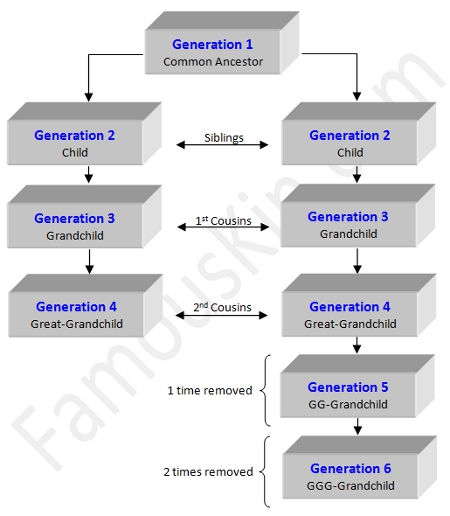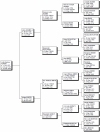Consanguinity is all about family relationships. Simply put, it's a way of answering the question, “How are two people related?” Two people who share a common ancestor are related. Terms like grandfather, aunt, cousin, and cousins removed are all used to state the degree of consanguinity or kinship between two people. However when the answer contains the phrase “times removed” it can sometimes be confusing.
So how can we calculate consanguinity?
To fully understand consanguinity, lets take a look at an example of how two people might be related. First you need to determine to what degree they are cousins (see figure 1). Are they second cousins, third cousins, or even seventh cousins?
You determine this by moving down both paths of lineal descent from the common ancestor an equal number of generations until you reach the first of your target relatives.

|
Starting with the grandchildren being first cousins, each succeeding generation is said to be second cousins, third cousins, and so on.
If both relatives are an equal distance from the common ancestor, that is to say, they are the same number of generations down from the common ancestor, then you are done and you have your answer.
What does times removed really mean?
But what if the two relatives are not an equal distance from the common ancestor and one is further down the family tree? This is where the term removed comes in.
For each generation that one relative descends further down the family tree than the other, this is counted as once removed, twice removed, etc (see figure 2). If you take a look at the chart, the two people at the bottom of each column would be 2nd cousins 2 times removed. You may also see this abbreviated as 2C2R.
 |







